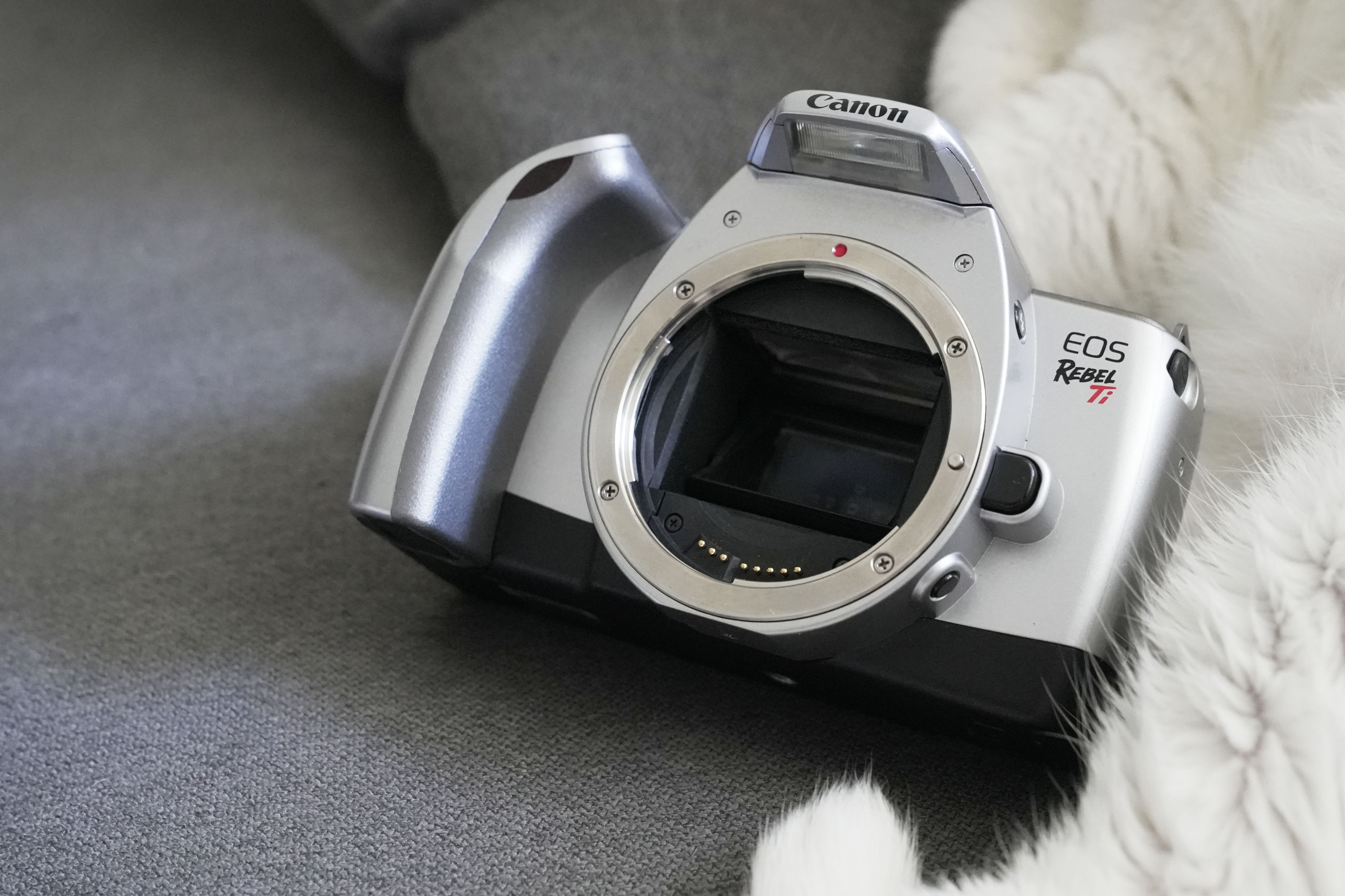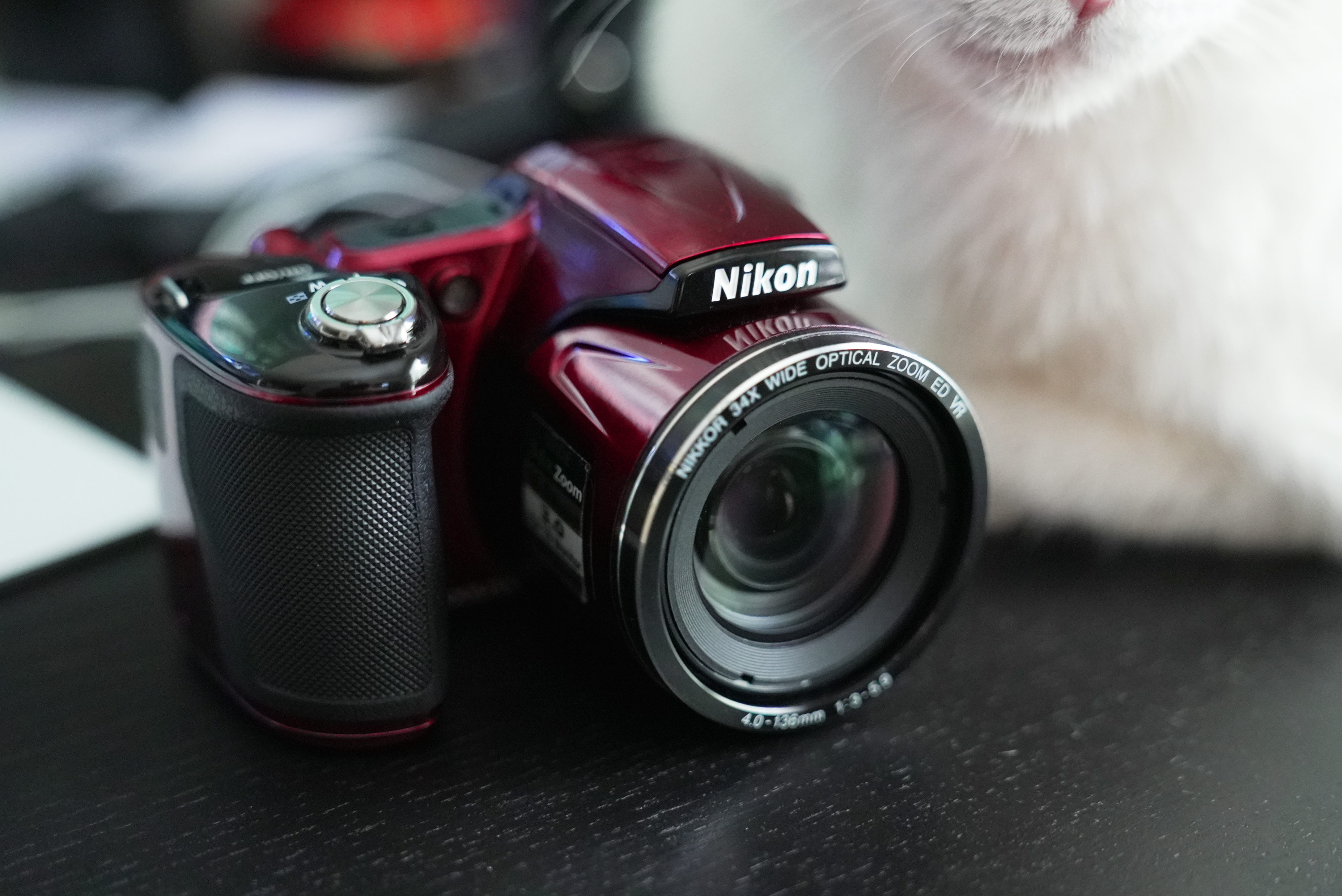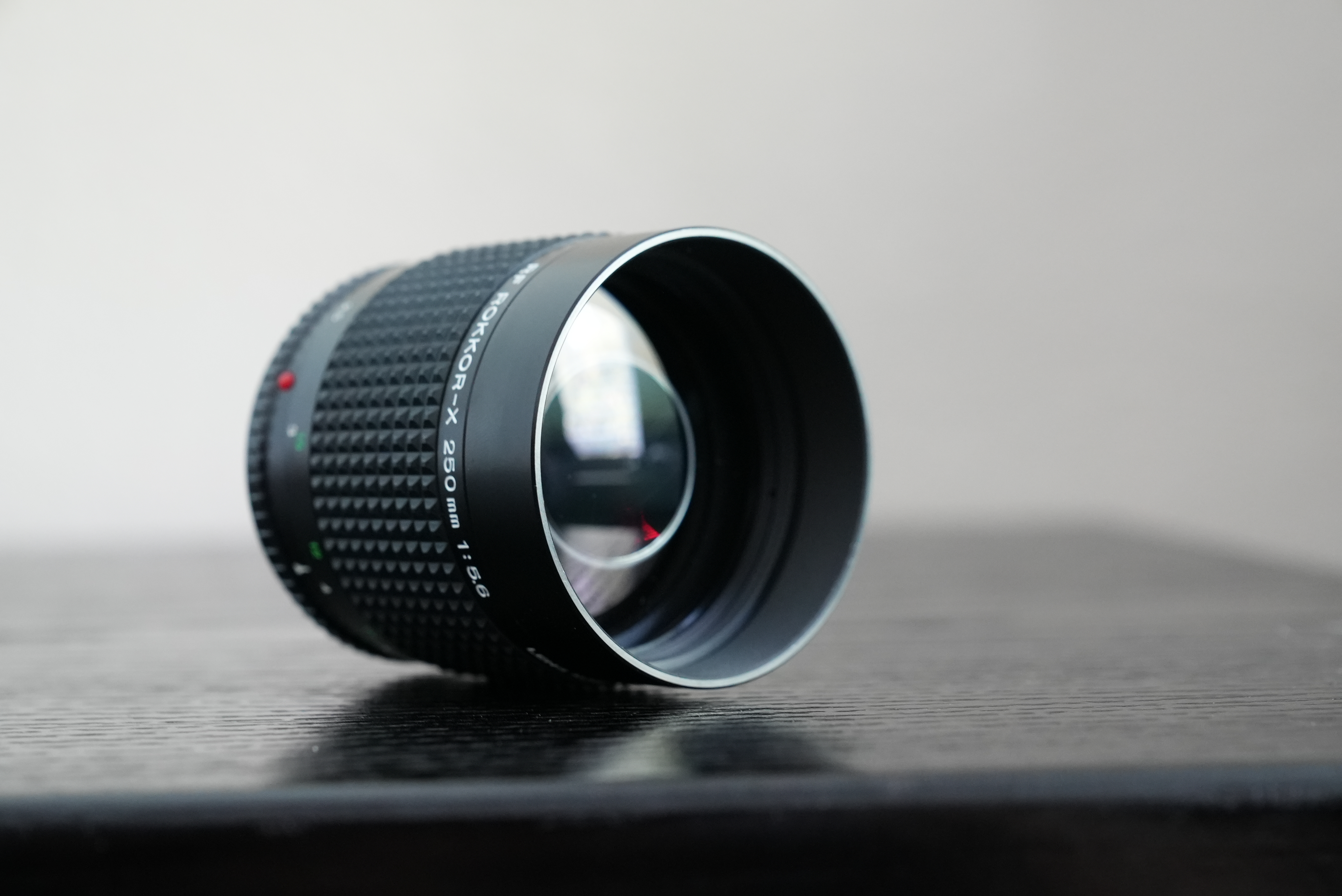
In our last search for some of our most affordable gear, we took a closer look at the Nikon Coolpix L830. This time, I found myself on the lookout for a camera that looks a little different than the matte black boxes that we’re used to seeing, and ended up finding a silver plastic camera body called the Canon EOS Rebel Ti.
An EF-mount Canon Rebel isn’t all that unique amidst DSLR bodies, admittedly. Upon first glance, it looks a lot like most of the other extremely popular Rebel cameras, known for being excellent entry points into the world of digital photography.
However, upon closer inspection, I realized this wasn’t a DSLR at all, but a 35mm film camera. This lightweight, supremely inexpensive, simple-looking silver bundle had caught my attention.

Introduced in 2002, the Rebel Ti went by several names upon its release depending on the market in which it was sold. In other parts of the world, the same camera could be found as the EOS 300V or the EOS Kiss 5.
I also discovered that the Rebel Ti was originally bundled with a matching silver-finish kit zoom lens, the 28-90mm f/4-5.6 II. Simply for kicks and to keep costs down, I grabbed an Ugly-grade sample–graded as such for the fungus filaments growing deep inside the lens.

The majority of the Rebel Ti’s controls sit comfortably within reach of the fingers of the right hand during operation. Without an overabundance of dials and switches, this camera keeps things fairly simple, and as a result, it also keeps things fun. Quickly switching up my shutter and aperture settings was a breeze, never seeming to get in the way of taking quick snapshots.
This Rebel isn’t manual-only, however. It offers a large number of shooting modes, from the typical Shutter-Priority, Aperture-Priority and full Manual to the depth-of-field controlled A-Dep or Full Auto. There are also dedicated modes for Portrait, Macro, Landscape, Sport, Night Portrait, or Auto without Flash. Keeping these modes on the top dial instead of buried in a menu system proved to be refreshing and easy-to-understand.
There’s also a single button on the left top of the camera that allows for selection of three different drive modes for single-shot, multi- or self-timed release. For added creative fun, there’s the typical exposure compensation of two stops in either direction, red-eye reduction, multiple exposure capability (up to 9 on a single frame), and bracketing modes. A pop-up flash allows for an easy zap of light when needed, and a full-size hot shoe allows for larger flashes to be used as well.
On the rear, you’ll find an LCD that tells you all of the applicable info instead of an image preview, and above that, you’ll find a bright and clear optical viewfinder.

Truly, it seems almost silly to be noting all of these features that seem commonplace on even the most base-model modern DSLR cameras, but to find all of these features in a 35mm Analog camera for under $70 (at the time of writing) feels different.
For my first roll of film, I grabbed the nearest thing I could find which happened to be a slightly-expired roll of Lomography XPro 200. It’s a slide film, meant to be cross-processed in C-41 chemicals in order to get high-contrast images with unique color casts. After looking through the viewfinder’s image of the ‘Ugly’ 28-90mm lens, a few things became clear.
First of all, I was almost immediately smitten with what I saw. It occurred to me that the image size of 35mm film matched up to a full-frame image size in common DSLRs. There was no crop-factor like you’d find in other Rebel cameras which generally hold APS-C sensor sizes. This meant my depth of field and image quality was going to be much better than I had originally expected.





For my second roll, I decided to switch things up. Knowing that the expired Xpro 200 might come out a little wonky, I grabbed my old favorite Canon 50mm f/1.8 II, loaded up a fresh roll of Cinestill 50D and went back to work.

The combination of a wide aperture and the incredibly fine grain of the Cinestill 50D made the images from this roll buttery smooth, with a hint of warmth in the tone thanks to the daylight-balanced film.






The autofocus was snappy and markedly faster than many older DSLR cameras I’ve used. Loading the film was incredibly simple, operation was smooth and intuitive, and the number of creative options for ease of use made using the camera a breeze. Honestly, this camera was such a joy to shoot and hold in the hand, even composed almost entirely of plastic.
A few things come to mind when comparing slightly older digital cameras and film cameras, but there’s one big difference that new shooters may not realize at first.
Older film bodies tend to age differently than older digital bodies. With an analog camera, your image is dependent on your shutter speed, lens settings, and film. There’s no hemming or hawing about megapixels or sensor sensitivity with a film body. The film itself does a lot of the heavy lifting for the shooter.
I underestimated this sub-$70 silver plastic Canon Rebel at first, but ended up having an awesome experience taking it out into the world and running a few rolls of film through it. Take a closer look at our affordable 35mm film cameras and have the same experience for yourself.




